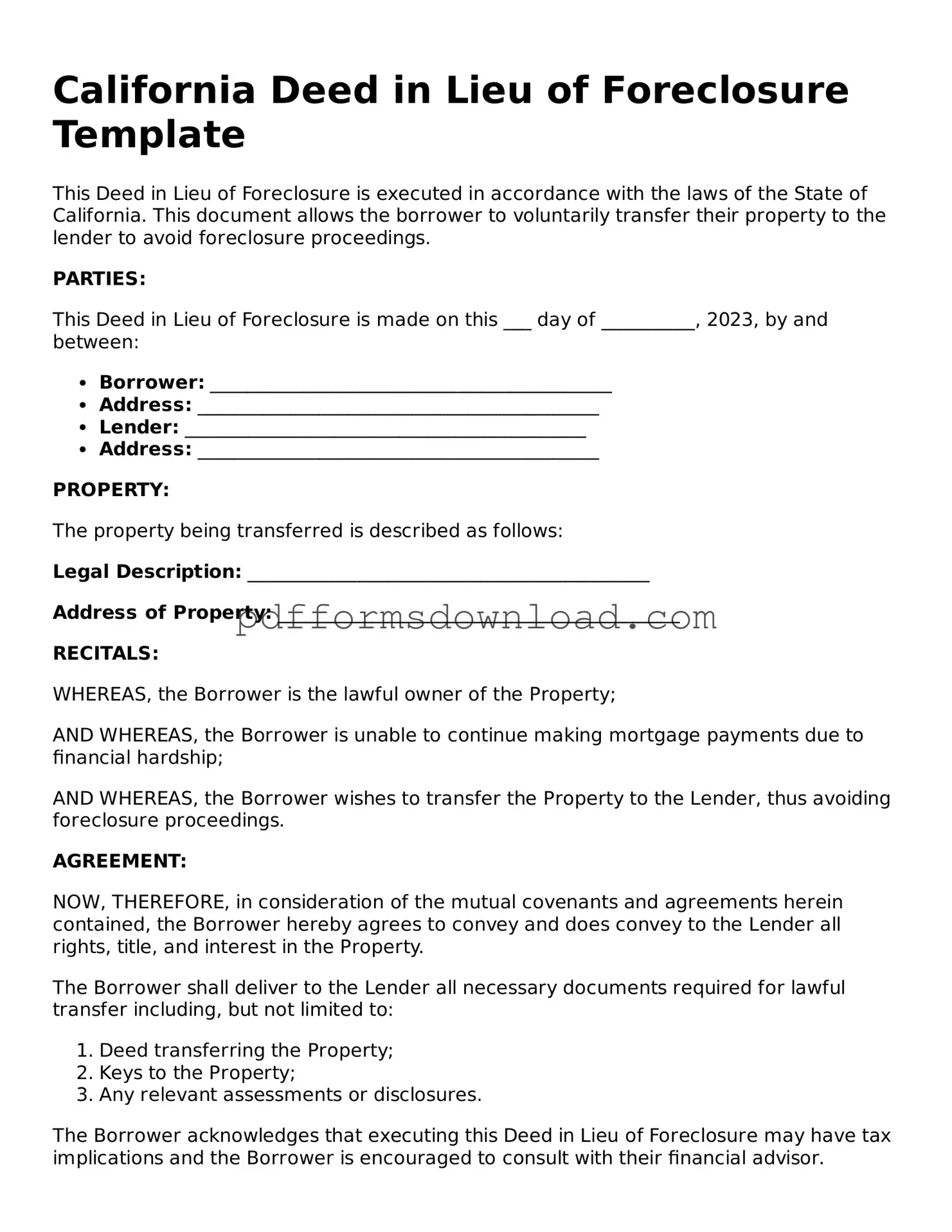What is a Deed in Lieu of Foreclosure?
A Deed in Lieu of Foreclosure is a legal process that allows a homeowner to voluntarily transfer ownership of their property to the lender in order to avoid foreclosure. This option is often pursued when homeowners are unable to keep up with mortgage payments and wish to mitigate the financial and emotional stress of a foreclosure process. By choosing this route, the homeowner may be able to avoid the lengthy and costly foreclosure proceedings.
What are the benefits of a Deed in Lieu of Foreclosure?
There are several benefits to opting for a Deed in Lieu of Foreclosure. First, it can help preserve the homeowner's credit score compared to a foreclosure, which can have a more severe impact. Additionally, it typically allows for a quicker resolution, as the lender may process the deed transfer faster than a foreclosure. Homeowners may also be relieved from further liability for the mortgage debt, depending on the terms agreed upon with the lender.
Are there any eligibility requirements for a Deed in Lieu of Foreclosure?
Yes, eligibility requirements can vary by lender, but generally, homeowners must demonstrate financial hardship and an inability to continue making mortgage payments. Lenders often require that the property is in good condition and free of any other liens. Homeowners may also need to provide documentation, such as income statements and a hardship letter, to support their request.
How does the process work?
The process typically begins with the homeowner contacting their lender to express interest in a Deed in Lieu of Foreclosure. After the lender reviews the homeowner's financial situation, they may approve the request. Once approved, the homeowner and lender will complete the necessary paperwork to transfer the property title. It is essential for homeowners to understand all terms and conditions before finalizing the agreement.
Will I be responsible for any remaining mortgage debt after the Deed in Lieu of Foreclosure?
In many cases, homeowners may be relieved of the remaining mortgage debt after a Deed in Lieu of Foreclosure, but this is not guaranteed. It is crucial to negotiate with the lender to ensure that they will not pursue a deficiency judgment for any remaining balance. Homeowners should seek clarity on this matter before proceeding with the deed transfer.
Can I still apply for other forms of relief, such as loan modification, if I choose a Deed in Lieu of Foreclosure?
Choosing a Deed in Lieu of Foreclosure may limit your options for other forms of relief, such as loan modifications. Once the deed is transferred, the lender may consider the matter resolved. However, homeowners should discuss all available options with their lender before making a decision. It is advisable to explore all avenues for relief before opting for a Deed in Lieu of Foreclosure.
